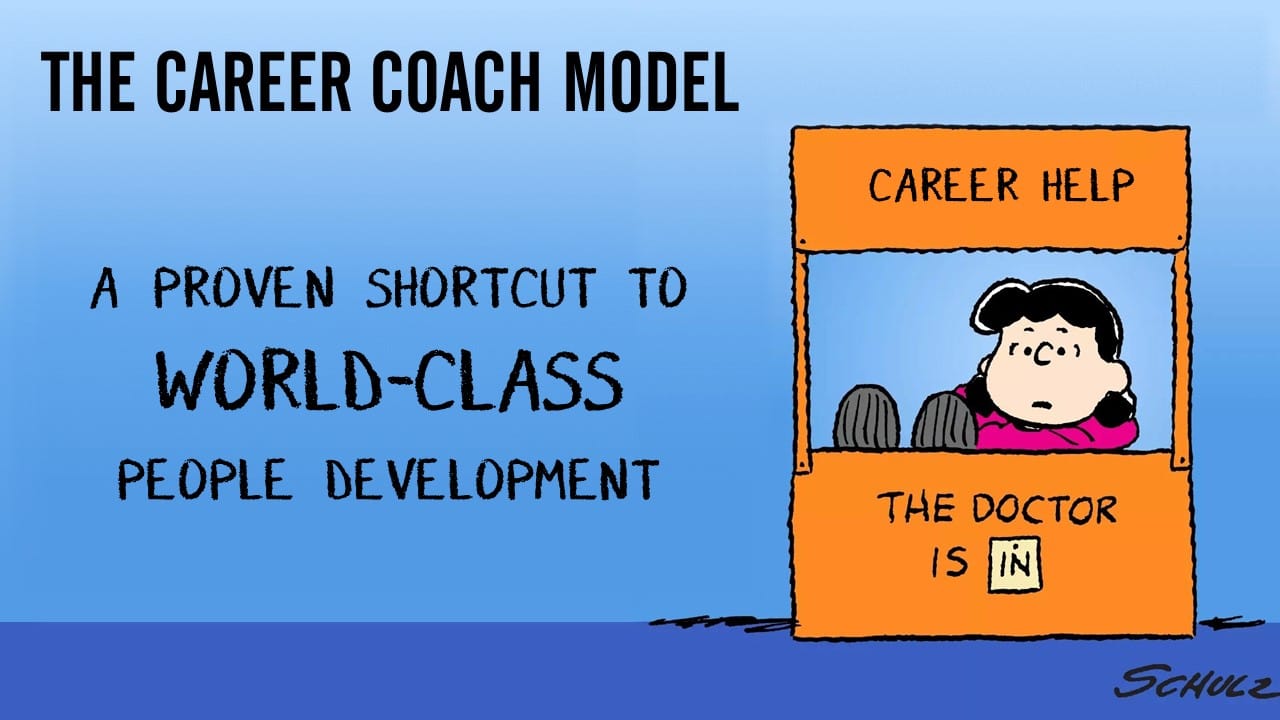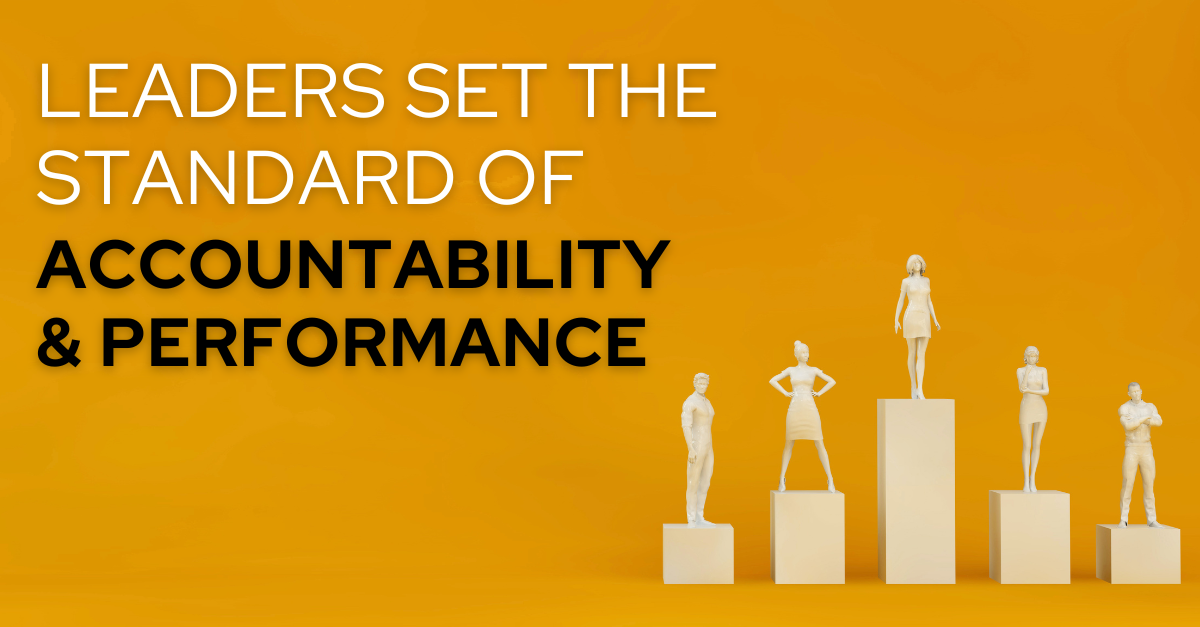What business leader wouldn’t want their company to be thought of as the Google of their industry? Brilliant people lining up to get a job… soaring stock price… the company that everyone’s chasing. Ahh, what a dream!
You can stop dreaming now because there’s something quite simple you can do to help get you there.
There’s no secret to Google’s success. It’s written everywhere. If you missed it, here it is again: Google puts people FIRST! (In case you’re wondering, that means people before profits.) In his book, Work Rules!, former Google head of HR, Laszlo Bock, wrote:
“Making sure our people are developing is not a luxury. It’s essential for our survival.”
The best way business leaders can demonstrate that they truly put their people first is to develop them. Doing so is a win-win-win:
- Employees Win because they feel valued and receive help advancing their career.
- The Company Wins by having more qualified, engaged, productive, and innovative employees.
- The Customer Wins by receiving great products and services that only top-tier talent can deliver.
Business leaders often mistakenly think that once they become wildly successful, THEN they will make employee development a priority. That’s putting the cart before the horse. You first need qualified, engaged, productive, and innovative employees to achieve Google-like status. But how, practically speaking, can average companies create killer leadership & talent development programs without breaking the bank? Answer: among the quickest, simplest ways to accomplish this is to implement the career coaching model.
How The Career Coach Model Works
Separate Processes
Typically, the very last section of the performance review is the Career Development section. By the time the manager and the employee have slogged through the performance review and get to the last page, they’re exhausted, so the career development discussion gets scant time or attention.
Reviewing past performance and discussing future career development are distinctly different discussions, and they should be treated as such. World-class talent developers make career development a totally separate process from performance reviews.
Career Coaches
Some companies allow anyone in the organization to self-select as a career coach. Becky Cotton was Google’s first “career guru” as they called her. Becky worked in Google’s online payments department (not HR) and enjoyed giving her colleagues career advice. So she decided to make it official. She simply announced in an email that she would hold office hours for anyone who wanted her career advice. Google’s Sr. VP of People Operations, Laszlo Bock, pointed out that getting started was as easy as Peanuts’ Lucy hanging out her THE DOCTOR IS IN sign.
This is not to say that organizations should simply leave career coaching up to their employees to initiate. Just imagine how successful your leadership and talent development program would be if you began by training in-house career coaches and equipping them with the time and tools? This approach typically produces the best results. When employees know that their employer fully supports career coaching, and is serious about employee development, employees will be more serious about it too.
Voluntary Sign Up
Many employees are quite content in their current position and would rather not spend the time discussing how to advance their career. They do a good job and prefer to fulfill their dreams and ambitions outside of work. That’s okay. We don’t want these valuable employees to feel forced to have career development discussions if they don’t want to.
Making career development discussions voluntary changes the very nature of leadership and career development. It feels less like a top-down corporate initiative and more like a great benefit for employees. Allowing people the freedom to choose to participate increases individual autonomy and evokes feelings of curiosity instead of caution, interest instead of resentment. But there is another massive benefit to employers: less work!
I was recently surprised to learn that some of the managers I was training to be career coaches had upwards of 40 direct reports! During the training some were thinking “There is no way that I can have meaningful career conversations with all my direct reports several times a year.” They were quite relieved when we discussed the option of allowing interested employees to sign up voluntarily, cutting their workload considerably.
Its important to note that career coaches should not be only limited to those employees who are interested in leadership roles. Employees who are interested in deepening their expertise, or broadening their skill set in their current role, should also be able to request a career coach. This way organizations can develop better leaders and more technical gurus using the same development system.
Choose Your Own Career Coach
The voluntary nature of career coaching can also extend to allowing employees to choose their career coach, instead of having their direct manager be their career coach. Direct managers may have more insight into the bigger picture of an employee’s experience at work, which could be a good thing. The downside of a direct manager’s perspective in career development discussions, however, is that it can sometimes lead to bias. For example, it is easier for an employee’s manager to confuse the employee’s performance in their current role with the employee’s potential to excel in other roles. For this reason, some organizations prefer to separate career coaches from the performance management role held by direct managers.
Sierra Systems, an IT services and management consulting firm, believes that separating their career coach role from the role of a manager creates some distinct advantages.
- The employee’s manager is able to focus primarily on the employee’s performance in their current role, and the career coach can focus on the employee’s development for future roles.
- The employee’s manager is not the sole gatekeeper of the employee’s career advancement opportunities.
- It provides a less-biased set of eyes when evaluating an employee’s potential.
- It gives the company a broader perspective of its talent pool.
Sierra System’s COO, Patricia Kaiser, remarked to me that their career coach program has proven to be a key attraction and retention tool.
Regular Career Development Discussions
One of the biggest mistakes organizations make in leadership and talent development is making the career discussion a once a year event. A lot can change in a year. Individuals key to a person’s career plan may have left the company. Creative new development activities may suddenly become available. And employees may complete their development plan within the first few months of the year. Should their development be put on hold until they meet again with their career coach?
For these reasons and more, career development discussions should happen three or four times a year.
Creating The Right Conditions
Career coaching may begin spontaneously or as an official corporate initiative. Either way, the right conditions must exist before it will happen.
Employee development initiatives can only be successful and sustainable in people-first organizations. The organization’s senior management team must truly believe and demonstrate that engaging and developing their employees is one of their top strategic priorities. Anything less will not produce the conditions necessary for employee development initiatives to flourish.






